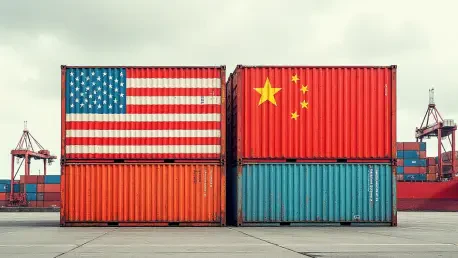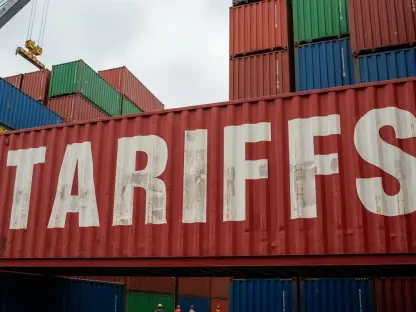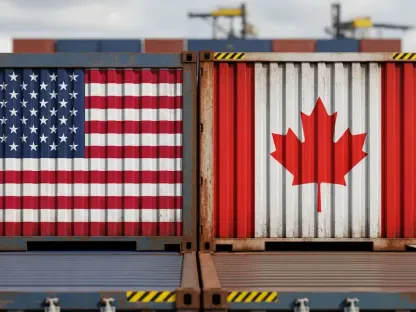In a significant development that could reshape the landscape of global trade, the United States and China have brokered a temporary truce in their long-standing trade war, marking a potential turning point after years of economic hostility. Announced on October 30, this agreement was reached during a high-stakes meeting in Busan, South Korea, between U.S. President Donald Trump and Chinese President Xi Jinping. The deal comes at a time when both nations are grappling with domestic economic pressures, making the reduction of tensions a priority for stabilizing markets. With punitive tariffs and retaliatory measures having strained relations, this accord offers a glimmer of hope for businesses and consumers alike. It includes tariff cuts, suspensions of certain investigations, and commitments to trade purchases, reflecting a mutual willingness to de-escalate. This pivotal moment raises questions about the durability of the truce and its broader impact on international trade dynamics.
Tariff Reductions and Immediate Impacts
A cornerstone of the recent U.S.-China trade agreement lies in the immediate reduction of tariffs on select Chinese imports, a move aimed at easing the burden on specific sectors. The U.S. has cut tariffs related to fentanyl trafficking from 20% to 10%, effective immediately, as highlighted by President Trump in his public statements. Furthermore, an extension on pausing reciprocal tariffs for another year has been agreed upon, offering temporary relief to Chinese goods entering American markets. Despite these steps, the overall duty burden on Chinese products remains substantial, averaging around 47%, with some categories still facing rates as high as 100%. This persistent high tariff level indicates that while the agreement provides some breathing room, it does not dismantle the significant barriers that continue to define trade between the two nations. The immediate cuts are a gesture of goodwill, but they also underscore the complexity of achieving a comprehensive resolution.
Beyond the headline tariff reductions, the agreement’s impact on specific industries and consumer costs cannot be overlooked. Although the cuts target niche areas like fentanyl-related imports, they signal potential for broader relief if negotiations progress. However, with the majority of tariffs still in place, American businesses and consumers are unlikely to see dramatic price drops on Chinese goods in the near term. The extension of the tariff pause for another year offers predictability for importers, yet the looming average duty of 47% ensures that trade friction remains a reality. Data from the U.S. Trade Representative’s office suggests that certain high-tariff items, particularly in technology and manufacturing, continue to bear the brunt of these costs. This partial relief, while welcome, serves as a reminder that the trade war’s economic toll is far from over, and both sides must navigate these reductions carefully to avoid reigniting tensions over remaining disparities.
De-escalation Through Policy Suspensions
Another critical facet of the trade truce involves broader de-escalation measures that go beyond tariffs to address systemic points of contention. The U.S. has committed to suspending its Section 301 investigation into China’s maritime and logistics industries for a year, which means halting fees on Chinese-linked ships docking at American ports. In a reciprocal move, China will also pause its countermeasures to these fees for the same period. Additionally, China has agreed to delay the implementation of export controls on rare earth materials by one year, a significant concession given the global reliance on these resources. Meanwhile, the U.S. will suspend a rule that imposed export restrictions on companies with substantial ownership by entities considered a national security risk. These mutual suspensions reflect a shared intent to dial back aggressive trade policies temporarily and create space for dialogue.
The suspension of investigations and export controls carries implications for global supply chains and strategic industries. By halting the Section 301 probe, the U.S. eases pressure on China’s maritime sector, potentially reducing costs for shipping companies and stabilizing port operations. China’s delay on rare earth export controls, on the other hand, averts a potential crisis for industries like electronics and renewable energy, which depend heavily on these materials. The U.S. decision to pause export restrictions tied to national security concerns also prevents further strain on technology firms with cross-border ties. However, these measures are explicitly temporary, set to be revisited within a year, raising uncertainty about whether they will hold under shifting political or economic conditions. This delicate balance of concessions highlights the intricate nature of unwinding years of trade hostilities while maintaining leverage for future negotiations.
Trade Pledges and Economic Ripple Effects
A notable element of the truce is China’s commitment to bolster purchases of U.S. goods, a move aimed at addressing trade imbalances that have long fueled tensions. China has pledged to acquire significant quantities of American agricultural products, such as soybeans and sorghum, alongside initiating purchases of U.S. energy resources, as emphasized by Trump on social media platforms. Although these commitments await official confirmation from Chinese authorities, they mirror historical patterns where China has increased imports to placate U.S. demands during trade talks. For American farmers and energy producers, who have endured substantial losses due to the trade war, this promise offers a potential lifeline. If fulfilled, these purchases could inject much-needed revenue into rural economies and energy sectors, though skepticism remains about the scale and timing of implementation.
The broader economic implications of these trade pledges extend to both domestic and international stakeholders. For the U.S., increased exports to China could help offset some of the trade deficit, a persistent point of contention, while providing a boost to industries battered by retaliatory tariffs. However, the lack of formal confirmation from China introduces a layer of uncertainty, as past commitments have sometimes fallen short of expectations. On the Chinese side, ramping up imports of U.S. goods may help stabilize domestic supply needs amidst economic slowdown concerns, but it could also strain budgets if global prices fluctuate. Internationally, this aspect of the deal might reassure markets by signaling a reduction in trade war fallout, though the temporary nature of the agreement tempers long-term confidence. The success of these pledges will hinge on execution and transparency, as both nations navigate the delicate task of balancing domestic priorities with bilateral obligations.
Diplomatic Dynamics and Leadership Roles
The diplomatic context surrounding the truce underscores the importance of personal engagement between leaders in achieving this breakthrough. The agreement was forged during the Asia-Pacific Economic Cooperation (APEC) summit in South Korea, where Trump and Xi met face-to-face to hammer out terms. Xi’s translated remarks painted a vivid picture of the leaders as helmsmen steering a massive ship through turbulent waters, acknowledging that friction between two major economies is inevitable due to differing national conditions. Yet, he emphasized the necessity of steady cooperation to manage disputes. This imagery reflects a mutual recognition that while deep-seated issues persist, direct dialogue at the highest level can yield pragmatic outcomes. The summit setting amplified the symbolic weight of the truce, positioning it as a public commitment to de-escalation.
Leadership perspectives further illuminate the nuanced tone of the agreement, balancing optimism with realism. Trump’s public statements exude confidence in the deal, spotlighting tangible benefits like tariff cuts and potential Chinese purchases as victories for American interests. In contrast, Xi’s comments suggest a longer-term view, framing the truce as a step in an ongoing journey rather than a final destination. This divergence in rhetoric highlights differing domestic pressures—Trump facing calls for quick wins, and Xi managing a slowing economy while maintaining global influence. The personal rapport displayed at the summit, however, suggests that both leaders see value in projecting unity, even if temporarily. Such dynamics indicate that while the truce is a diplomatic achievement, its durability depends on sustained commitment from both sides amidst competing national agendas and external uncertainties.
Global Stage and Strategic Timing
The timing of the truce, coinciding with the APEC summit, appears deliberately chosen to maximize its visibility and impact on the global stage. By unveiling the agreement at a forum attended by leaders from across the Asia-Pacific region, the U.S. and China send a clear message of intent to reduce economic hostilities, at least for now. This public display of cooperation is likely aimed at calming jittery global markets, which have been unsettled by the unpredictability of the trade war. Trading partners, caught in the crossfire of tariffs and supply chain disruptions, may view this as a positive signal, though the annual renegotiation clause in the deal introduces a note of caution. The strategic timing also aligns with domestic challenges in both nations, such as inflation in the U.S. and economic slowdown in China, underscoring the urgency of stabilizing trade relations.
Beyond immediate market reactions, the global implications of this truce are multifaceted and far-reaching. For other nations, the agreement could encourage a renewed focus on trade diplomacy, potentially easing tensions in other bilateral relationships strained by the U.S.-China conflict. However, the temporary nature of the deal means that optimism must be tempered—future renegotiations could unravel progress if political winds shift or economic conditions worsen. The truce also positions both countries to address domestic audiences, with the U.S. showcasing gains for key industries and China demonstrating resilience against external pressure. Globally, the reduction in trade war intensity might stabilize commodity prices and supply chains, though lingering high tariffs ensure that full normalization remains elusive. This strategic moment highlights the interconnectedness of economic policies and international perceptions, with the world watching closely for the next chapter.
Navigating the Path Ahead
Reflecting on the path forward, it’s evident that the U.S.-China trade truce, while a notable achievement, is merely a pause in a larger conflict rather than a definitive end. Established through tariff reductions, policy suspensions, and trade commitments, the agreement provides temporary relief to strained economic ties. The personal engagement between Trump and Xi at the summit in South Korea sets a tone of cautious cooperation, acknowledging underlying frictions yet prioritizing dialogue. However, with high tariffs still in place and an annual renegotiation framework looming, the durability of this ceasefire remains uncertain. Looking back, the focus should shift to building on this momentum through consistent negotiations, addressing core issues like intellectual property and security concerns. Future steps will likely involve leveraging this window to foster trust, ensuring that both nations can transition from short-term concessions to long-term solutions for global economic stability.









